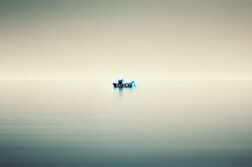Ali Rahimi, a 44-year old Iranian refugee detained at Villawood Detention centre for more than two years, died on 27 February. An inquest has been requested and the matter is being investigated, but the government’s dim view of the 1010 Iranian refugees who comprise almost one fifth of all detainees is a broader problem.
Rahimi was politically active in the People’s Mujahedin of Iran, a controversial and prohibited leftist organisation. According to Ian Rintoul, a refugee advocate from Refugee Action Coalition, he was involved in the uprisings of 2009 in Iran, when his brother was executed by the Iranian Government.
He arrived by plane in April and was immediately detained. After applying for asylum, Rahimi was interviewed by immigration officers and indicated he had strong proof of political activities undertaken by himself and his family.
Rahimi also converted to Christianity. John Fry, a close friend of Ali who helped him within the asylum seeking process, said that Ali found peace in Christianity and was a strong believer.
According to the July 2011 Department of Immigration guidelines on Iran, if a Muslim converts to Christianity, it "is considered apostasy" and the person risks "being detained and arrested" in Iran.
Ismail Mirza Jan, a close friend of Rahimi in Villawood, told New Matilda that despite this Rahimi wished to return to Iran:
"‘If the regime in Iran were different, I would go immediately home,’ that is what he always said," Jan said. "He was always worried about his family, two children and his wife are still in Iran".
Jan maintains that Rahimi believed he would be killed upon returning to Iran because of his political and religious beliefs. Because the Iranian government does not accept the involuntary return of failed asylum seekers, he was detained indefinitely in Villawood.
Detention exacerbated Rahimi’s poor health, which Dr Michael Dudley, who assessed his health, said stemmed from "a clear history of torture". Dudley wrote several recommendations to release Rahimi from detention; he suffered post-traumatic stress, flashbacks and nightmares, tinnitus, panic attacks and depression. He also witnessed the suicides of three other detainees, Josefa Rauluni, Ahmed Obeid Al-Akabi and David Saunders.
"Ali’s death was preventable", Dudley told NM. "The medical health care is not sufficient, the staff are not medically trained and their previous work experience is usually in prisons. They see the people in the detention centre as malign."
He describes the atmosphere toward asylum seekers as one of distrust, a difficult situation given the staff have to make judgements about detainees’ health. "Usually they use relaxation techniques, give Valium or painkillers," Dudley said. "However there are no transparent reports on the medical treatments."
Due to this both Dudley and Rintoul are unsure as to the exact circumstances of Rahimi’s death, and are anticipating answers from the forthcoming inquest.
Iranian asylum seekers are the black sheep of the detention system. In a 30 March report from the Joint Select Committee on Australia’s Immigration Detention Network Assistant First Secretary Janet Mackin comments:
"The Iranian clients tend to be more — when you compare them, for example, to the Afghan or Sri Lankan clients — from the middle class, well-educated, urban environment. So they have different and higher expectations than some of the other cohorts."
Dudley believes the government’s practice of labelling refugees by nationality has resulted in particular ethnic groups, especially Iranians, being "targeted".
The same Joint Select Committee report notes that during the 2009 post-election Iran political uprisings the police and military in Iran used "excessive force to disperse protesters". Between 4000 and 5000 people were detained. The Department does not take these details into account when judging asylum claims. Although the website of the Department of Foreign Affairs advises Australian citizens "to exercise a high degree of caution" and warns against travel in the border zones of Iran, Iranian refugees must be checked for a "real chance" of persecution should they return home.
According to a spokesperson for the Department of Immigration and Citizenship, 12 Iranians were deported in 2012 and 49 in 2011. The spokesperson told New Matilda "the Australian government does not assess every country on the safety aspect. Each case is individually
assessed".
Following the deaths of Rauluni, Al-Akabi and Saunders, the coroner staunchly criticised the circumstances of detention and the risk management and assessment procedures of both DIAC and the multinational corporation tasked with running Australia’s immigration centres, Serco.
Ali Rahimi’s death is still being investigated.
Donate To New Matilda
New Matilda is a small, independent media outlet. We survive through reader contributions, and never losing a lawsuit. If you got something from this article, giving something back helps us to continue speaking truth to power. Every little bit counts.



